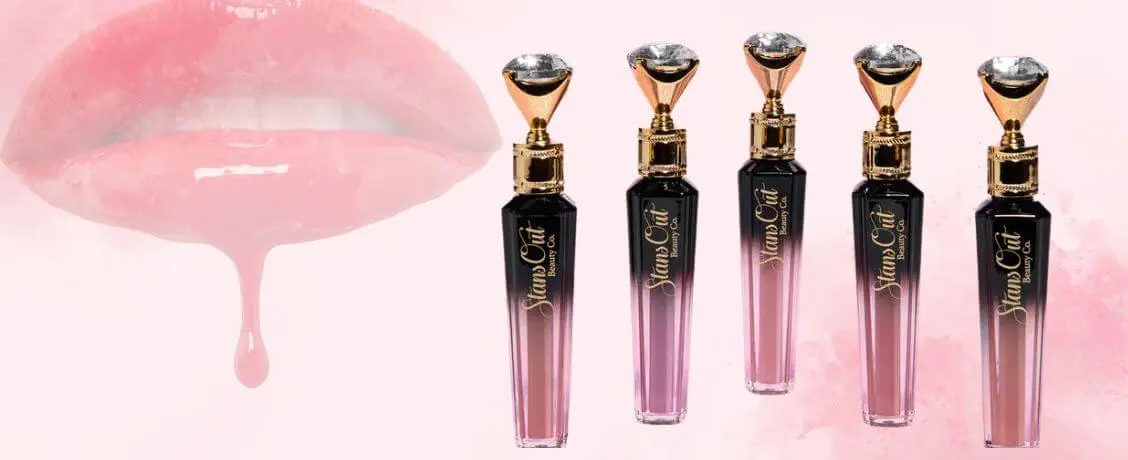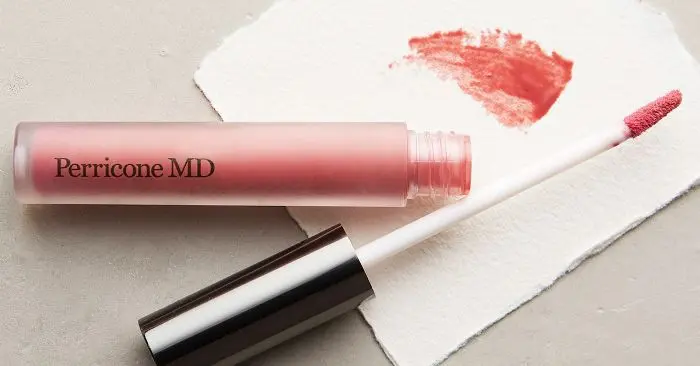Lip gloss as a beauty aid has been around for many decades. It is loved for its ability to make the lips shiny and this attraction has helped transform lip gloss from a simple shine enhancer to a multi-functional beauty aide used for hydration, color enhancement, and even flavoring. But, have you ever asked yourself, what the ingredients of lip gloss are? What materials are used to produce this beauty aid in the form of gloss? The rest of this article seeks answers to these questions by discussing the components of lip gloss and the role each of the components plays on its benefits.
Knowing what goes into lip gloss is essential especially if you are needing something for your specific needs, whether you’re a veteran in the world of beauty or a newbie. From lip glosses that shine and provide texture, keep your lips moisturized till ones formulated with durability and ease of use in mind, the components used in the production of lip glosses are chosen with utmost precision. From natural fillers to nourishing oils, lip glosses are crafted with intention.

Now, let us explore the components that make ‘lip gloss’ the cosmetic treasure it is today. From the foundational oils that blend seamlessly to pigments that provide vibrant hues – knowing what is within your lip gloss will allow you to select the ideal formula for beautiful and healthy lips_with a gloss that catches the light at every angle.
Key Ingredients in Lip Gloss
Lip glosses are made of varying ingredients, each fulfilling a lip gloss’s function. Let’s analyze the most lip gloss products’s basic ingredients.
1. Base Oils and Waxes
The core of any lip gloss is the concoction of base oils and waxes which give the texture, body, and luster characteristic of gloss. Ingredients which allow for smooth application and lasting durations of lip gloss.
Castor Oil
One of the most popular oils in lip gloss formulation is castor oil. It is a colorless, thick liquid with exceptional moisturizing capabilities. Castor oil assists in smoothing the application of gloss on lips while achieving the much prized smooth and shiny luster.
Coconut Oil
Coconut oil is well-known for its moisturizing and calming effects. It prevents the lips from becoming dry and keeps them supple. Its benefits don’t end there: coconut oil also has natural antibacterial properties, making it superb for lip glosses formulated to promote lip health.
Beeswax
Beeswax is a natural wax that provides structure to the gloss and acts to give it some consistency. Some portions of the gloss will be held in place enabling a firmer texture than would result from using oils alone. It is good for dry lips because it contains moisturizing properties.
Lanolin
Lanolin is extracted out of sheep’s wool, and is often found in lip gloss because it increases its moisturizing properties. It’s an emollient and works effectively to nourish the lips, softening and hydrating them for hours.
For More Details Please Read: How to Apply Blush
2. Emollients and Moisturizers
To ensure that lip gloss feels smooth and easy to wear, emollients are very important. These additives help in moisturizing and make sure that the lips remain soft and supple.
Vitamin E
As a potent antioxidant, Vitamin E is well known to nourish and protect the skin. In lip gloss, it moisturizes and hydrates the lips while also acting as a barrier against environmental stressors.
Shea Butter
Shea butter is perfect for enhancing the gloss’s texture by adding luxurious feel while serving lips with soft and hydrated skin. Its healing properties also perfect the butter to treat dry and cracked lips.
3. Pigments and Dyes
The colors of lip glosses, which may range from light nudes to pinks and vibrant reds, is attributed to pigments. The desired tint and shimmer can be obtained from these pigments which may be natural or synthetic.
Mica
Mica is an artificially created mineral that is frequently used to give lip gloss a shimmer or shine effect. It has a sparkling light reflection feature which improves the glossy finish of the product.
Iron Oxides
Iron oxides are used to provide natural, earthy tones in lip gloss. These are common in glosses that offer more muted or matte finishes, like nude or brown shades.
4. Fragrance and Flavors
The performance of the gloss is not reliant on these components, but rather it’s the overall sensory experience which is enhanced. Many lip glosses are scented or flavored to add an extra layer of enjoyment.
Essential Oils
Certain lip gloss manufacturers may enhance the allure of their products by adding fragrance oils like peppermint, vanilla, or citrus. These oils provide a refreshing tingle when applied to the lips and some gloss manufacturers, in fact, use these facilities for marketing purposes.
Artificial Fragrances
To please consumers, businesses also make use of artificial fragrances which are often fruity or sweet in nature. Those fragrances can improve a product’s appeal, but consumers must be careful and select lip glosses that use natural or non-irritating scents to avoid potential skin irritation.
How Do These Ingredients Work Together?
You get to experience the ultimate blend of oils, waxes, emollients and pigments when putting on lip. The base oils together with the waxes give a glossy and smooth feel which aids in emollient retention, thus allowing the lips to maintained moisturized. Moreover, pigments and mica provide color and shimmer while the scents boost one’s experience. All put together, these components create a product that ensures the lips look exquisite and at the same time keeps the lips satiated and healthy.
Is Lip Gloss Safe for Your Lips?
It’s safe to say that lip glosses can be used daily, however, for those with allergies or sensitive skin, checking the ingredient list is a must. Better lip gloss options are those without parabens, sulfates and artificial ingredients. Better yet, natural glosses that contain less synthetic ingredients are optimal for long-term use. Due to certain fragrances or colorants being common culprits for irritation, it’s best to patch-test new lip glosses prior to regular use.
Conclusion: The Secret Behind Lip Gloss
Lip gloss is more than just a cosmetic accessory; it is an intricate blend of natural oils, waxes, pigments, moisturizers, and more. Knowing what each ingredient does, from hydration to shine, can help you reap the full benefits lip gloss has to offer. Be it a sparkly tint or clear shine, being informed on what your lip gloss entails allows for confident selected choices to keep your lips healthy and glowing.
My Personal Experience:
Finding a lip gloss that balances hydration and shine has always been a goal of mine, so my experience with lip glosses has spanned across multiple brands. From drug store to high end luxe glosses, I’ve tried them all, and they all had something different to offer. Some made my lips feel overly sticky while others provided a nice sheen but no moisture. With all the trial and error, I’ve come to appreciate a gloss with castor oil, Vitamin E and shea butter which is essential if you want comfort and prolonged hydration.



